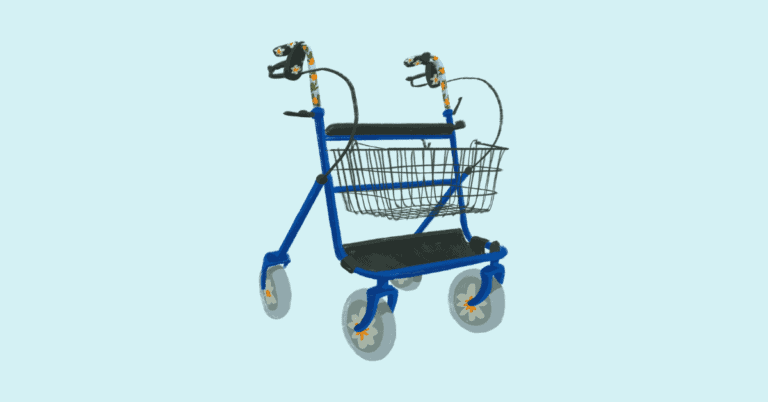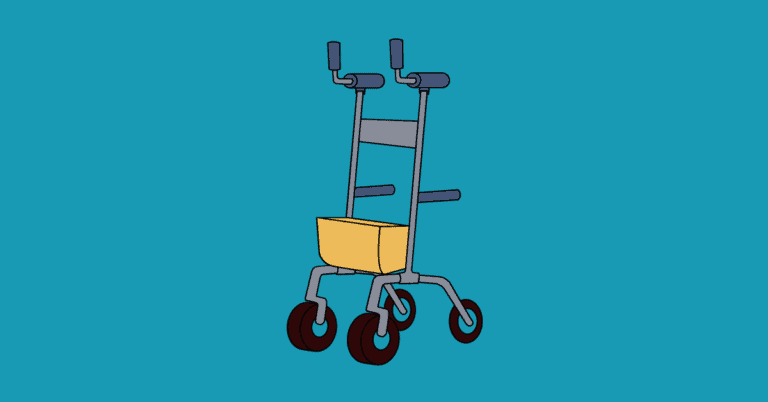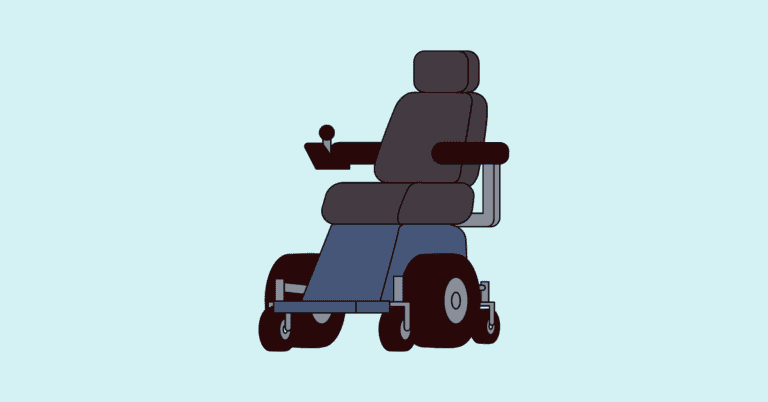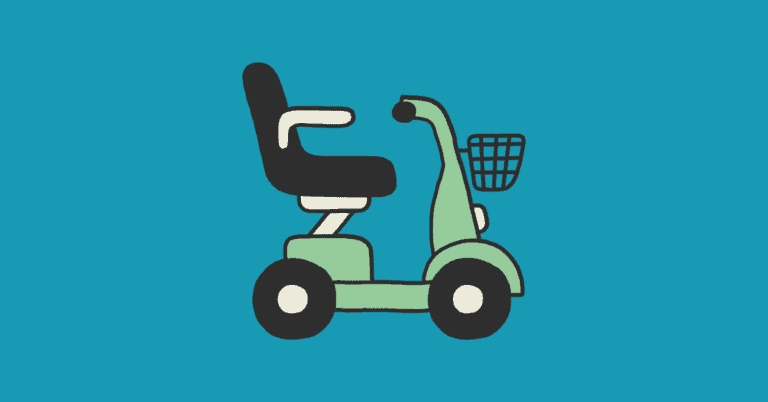Types of Walkers: Choosing A Walker
Walkers are mobility devices that are used by many individuals. They may be used temporarily during surgical recovery or may be used as a long-term aid to help individuals with balance support, limited mobility, pain, or even reduced walking endurance.
In the clinical setting, such as when working with physical therapists and occupational therapists, the importance of assistive device training cannot be overstated. Proper use of a walker goes beyond just providing support; it’s about ensuring safety, preventing falls, and minimizing the risk of injuries.
This article goes over the main differences between types of walkers so you can make an informed decision about the best rollator/walker for you. That said, if you are concerned about your balance or general mobility, and aren’t sure about where to begin, consider consulting with a health professional for personalized assessments and further guidance on obtaining the right mobility aid for you.
Depending on the situation, the healthcare professional can collaborate with you to create effective strategies and exercises aimed at improving stability and minimizing the risk of falls.
Is a rollator different from a walker?
Often the term “walkers and rollators” are used interchangeably although they refer to different assistive devices. A rollator can be thought of as a type of walker, which is why it is often referred to as a “rollator walker”.
Simply stated, a rollator is a walker with four wheels, brakes, and usually a seat.
While a walker does not necessarily have wheels on all of its base/legs, a rollator has wheels on all of its bases. For example, a three wheel rollator has 3 bases and three wheels.
For the purposes of this article, I arranged “rollators” under different categories of the general term “walker”.

Short answer, which walker do I need? Answer = likely a standard rollator
So just the short answer, if this walker is for long-term use such as with balance concerns, the majority of you will likely find a standard rollator walker to be the most comprehensive and convenient option.
The next best suitable options for long-term use would be three-wheel rollator, upright rollator, and maybe a rolling walker.
I expand on all this throughout the article too. So for the longer answer, continue reading.
What are the different types of walkers?
Below lists the different categories of walkers with the rolling walker and standard rollator being the two most commonly used mobility aids.
Standard Walkers

Traditional walkers, identifiable by their four rubber tipped legs without wheels, are mainly used as temporary aids, such as in hospital settings. Primarily employed for short-term needs, like post-lower limb surgery recovery (following post-surgical precautions) or during injury rehabilitation, a traditional walker generally serves as a tool to reduce or completely alleviate weight from the affected leg during walking.
Since they don’t have wheels, a regular walker has to lifted every two steps to progress forward during ambulation. I would not advise using a standard walker for individuals dealing with moderate to severe balance issues, particularly those prone to losing balance backward. When you lift the standard walker to move forward, there’s a risk of falling backward, making it less stable compared to other types of walkers.

Rolling/Wheeled walkers ( aka a “two wheeled walker”)
Rolling walkers, with two wheels on the front legs and rubber tips on the rear legs, enable the user to slide the walker forward instead of lifting it during ambulation – which makes it a more stable option than standard walker for those with balance deficits.
Similar to a regular walker, it allows for weight reduction or complete unloading of weight from a specific leg. By relying on the support of the other leg and arms, individuals can sustain mobility and independence throughout the surgical or injury recovery process.
That said, if you only need to use your wheeled walker occasionally or only need the assistive device for indoor use, then a rolling walker may be a suitable choice for you.
However, if you anticipate long-term and frequent use, a rollator might be a better choice. This is because the four wheels of a rollator facilitate easier navigation across various terrains, ensuring improved accessibility in different environments and fostering a more independent lifestyle. In contrast, a rolling walker may pose challenges when used in rough outdoor environments.
Bariatric walkers
Bariatric walkers refers to the category of walkers designed for individuals of heavier weight or taller heights. There are both standard and rolling bariatric walkers available. The reasoning for use would be the same as stated above.
In addition there are bariatric rollators which are designed to offer more stability and accessibility than standard and rolling bariatric walkers.
Knee scooters (aka a “knee walker”)
Knee scooters are for specific situations that involve needing to place the injured leg on a cushioned platform with wheels, facilitating movement without placing any weight on the affected limb.
This is usually used for individuals recuperating from injuries such as lower limb fractures or foot surgeries. It’s not a commonly used or long-term option, reserved for specific situations and recommendations. Nevertheless, it’s worth mentioning as it’s sometimes referred to as a ‘knee walker”.
Standard Rollator (aka a “four wheel walker”)
The conventional rollator, a widely used mobility aid, is equipped with four wheels, a seat, and height-adjustable handles with brakes. Like a rolling walker, a rollator moves with you (no lifting required).
As previously mentioned, a rollator allows better navigation across various surfaces, such as carpet and outdoors terrain, due to the four wheels.
Moreover, a rollator is beneficial for individuals with limited walking endurance. Based on my interaction with rollator-users, patients often emphasize the advantage of being able to take seated rest breaks when needed. This also allows them the flexibility to carry out their daily tasks more autonomously.
In terms of stability and balance support among assistive devices, rollators surpass standard walkers. Due to this, this is the commonly recommended assistive device for individuals with moderate to severe balance impairments.
Three wheel rollators (aka a “three wheel walker”)
Three-wheel rollators feature a conical front design, enhancing maneuverability in tight spaces and crowded areas. This proves advantageous for individuals primarily using their walkers indoors, especially in narrower environments.
It’s essential to note that, due to having only three wheels, a three wheel rollator is not as stable as a standard four-wheel rollator. Additionally, its design typically excludes a seat.
Upright rollator
The upright rollator aims to prioritize a more upright posture during use and incorporates armrests for elbow and forearm support, making it particularly advantageous for individuals with hand or wrist weakness, such as arthritis.
This kind of rollator allows the user’s base of support to be closer within the walker, promoting a more upright position. However, it’s important to note that the unique design and increased width of upright rollators result in a larger turn radius, which may pose challenges in tight spaces or narrow corridors.
Just to note: This doesn’t mean that a standard rollator encourages a forward posture. Considering the design, users generally aren’t as close within a standard rollator as an upright rollator. So, since the base of support of a standard rollator is positioned farther in front, it could potentially lead to a forward-leaning stance overtime if posture is not consciously maintained.
Ultimately, the decision to choose an upright rollator depends on individual preferences and priorities.
Here is the brief compare and contrast between the three types of rollators:

Which walker or rollator is the right option for me?
In sum,

Considering the Different Features
Walker weight
Lightweight walking aids are easier to carry and transport. This adds to their portability.
Walker frame
Walkers and rollators have varying weight capacities. Usually, manufacturers include the weight capacity that the assistive device can support; it’s always good to ensure you are within their recommended range.
Height adjustability
Similar to the above point, you want to make sure the walker or rollator can be adjusted to your height. Some manufactures include the height adjustability range instead of the “user recommended height range”, in which case you can measure your height from the ground to your wrist (with your hand relaxed by your side). Ideally, you want the handle of the walker or rollator to be at a level that results in a slight bend in the elbow when you grip it.
Portability
Most walkers and rollators are foldable but also consider the ease of foldability.
Wheel size
Rollators with small wheels prove optimal for indoor use because they have a smaller turn radius that enhances maneuverability in tight corners and confined spaces. On the flip side, rollators equipped with larger wheels, while having a wider turn radius, excel in navigating uneven and rough terrain, delivering a smoother experience when used outdoors.
Seat?
Only standard rollators and upright rollators come with a seat.
Brake system
Rollators can come with different braking systems, although the loop-style hand brakes are the most common; Similar to a bicycle, you would pull up to brake. To temporarily lock the rollator, such as before and while sitting down on the seat, you would pull the brakes down and this should hold in place.

Will medicare cover the cost of my walker?
Medicare Part B functions as supplementary medical insurance, offering individuals the flexibility to opt out if desired (although opting out is generally not recommended). A walker, classified as durable medical equipment (DME), falls within the coverage of Medicare Part B for enrolled individuals. It is important to note that the eligibility for reimbursement of any assistive devices is determined by a specific criteria. So if you are seeking reimbursement, you have to meet that specific criteria – therefore, it’s not guaranteed that everyone will be covered for their assistive device.
The journey through the reimbursement process for your assistive device involves a sequence of steps, which can differ in individual cases. Typically, for those exploring assistive devices through Medicare Part B, the process begins with a doctor prescribing the device as a medical necessity. Following the prescription, the subsequent step involves coordination with a certified occupational therapist, physical therapist, or a Medicare-approved assistive device supplier. Your therapist may also offer suggestions for approved suppliers, streamlining the accessibility of the process.
The collaborative assessment conducted by your therapist aims to understand your mobility needs, medical condition, and lifestyle preferences. This assessment serves as the foundation for accurate form submissions to Medicare. The duration required to obtain your assistive device varies based on factors such as the level of customization needed.
It’s essential to recognize that Medicare covers the fundamental level of DME products for specific conditions. When necessitating new equipment, your doctor must provide documentation affirming its medical necessity for your condition. A comprehensive understanding of these steps, coupled with close collaboration with your healthcare team, can significantly facilitate a smoother process for acquiring necessary assistive devices through Medicare.
I understand that is a lot of information. If it helps you understand the process better, I recommend consulting with your doctor for guidance. It is likely that your doctor may write you a script for physical therapy or occupational therapy for further assessment.
How much does a walker cost out of the pocket?
Walkers can range from $30 to $70.
Rollators tend to be more expensive, ranging on average from $70 to $250.
Remember this is just an average range value.
Bottomline
The correct walker or rollator for you depends on your needs and priorities. Don’t hesitate to reach out to a health professional for further guidance.





